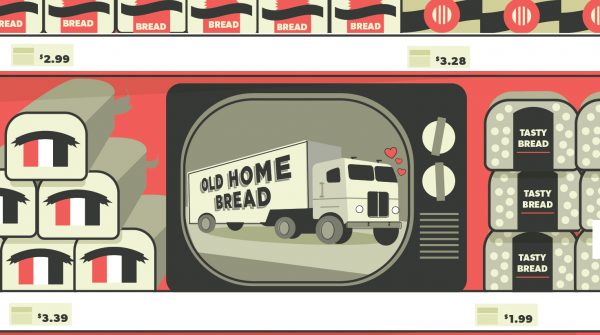How a 1970s ad campaign still shows what’s possible in a commoditized world.
If you’re reading this, then there’s a 99.9% chance your brand is in a highly commoditized segment. Your messaging might feel a little boxed-in as everyone pushes and shoves to carve out a unique space on the communication landscape. If the situation wasn’t already tricky, more brands and overlapping stories are constantly entering, and the problem is getting a little messy.
So, what are your brand’s options? You could maintain the course. It’s safe, it’s proven, but it may not yield the necessary growth. Or you could look at the problem from a different perspective and do what determined brands have always done: pivot. Take a sharp turn away from the established lanes and embrace the opportunities when there’s no longer a need to play by the rules. Time and again, brands that pivot have discovered the value of being different.
“Show me,” you say? Why I’d be happy to.
To start, let’s talk about a category that’s not always known for innovative messaging: bread. Mass-appeal, no-fuss bread. There are countless options, and your grocer probably has a Great Wall of Bread to choose from. However, like most people, you rarely switch brands (you may even rely on muscle memory to grab your usual bag). You could always try something new, but we’re creatures of habit, and it would take something very different to switch things up. Now imagine you’re a bread marketer in the mass-appeal category who needs to increase sales. Gulp.
This brings us to the case of Old Home, a baked goods company that sat squarely in the above marketing predicament. Even in the 70s, messaging options were well-trodden and, no pun intended, stale. So, Old Home turned dramatically and gave the public two non-category characters to tell their tale: a truck driver named C.W. and a truck-stop waitress named Mavis. A country sing/talk voice using folksy rhyme provided all the narration and dialog.
Whenever the long-hauling C.W. met the coffee-slinging Mavis, a flirty conversation ensued. Old Home products were always served, and the character’s relationship blossomed (because seriously, get a room). For one more brand mention, everything happened at the Old Home Filler-Up an’ Keep-on-a-Truckin’ Café. (Cringey side note: the sexism of the era is on display.)
The campaign was also unique for everything absent. There wasn’t a flour-dusted loaf in warm, glowing light. A discerning parent approving of nutritional value was out the equation. Kids that finally have bread they like were never mentioned. Instead, the audience delighted in the blue-collar, downhome stories of C.W. and Mavis – the of-the-people spokespeople.
The pivot paid off and sales soared. People were calling into TV and radio stations wanting to know when the spots were going to air. The campaign’s popularity even drew the attention of The Wall Street Journal. Jealousy from other brands was assumed but never confirmed.
Commoditized brands and commoditized messaging are perennial in marketing. And decade after decade, there have always been brands that turn this problem into a sales solution. If you need even more incentive, it helps to know the public is already on your side. All of us turn toward the new and different. Modern culture is practically based on the latest and next. So, as more brands provide more of the same, a pivot is practically a logical next step.
Your pivot is out there. Case studies are ready to be written. Maybe you’ll even show the world that the best thing since sliced bread is how it’s marketed.




